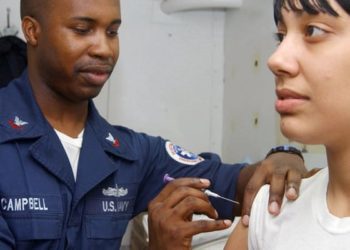Multiple colposcopy biopsies may improve cervical cancer precursor detection
1. An increased number of lesion-directed cervical biopsies during colposcopy was associated with increased sensitivity for the detection of high-grade squamous intraepithelial lesions.
2. The absolute increase of sensitivity was greatest for women with increased risk of high-grade squamous intraepithelial lesions.
Evidence Rating Level: 3 (Average)
Study Rundown: A colposcopic examination and biopsy is typically recommended for women with an abnormal cervical screening test to detect high-grade squamous intraepithelial lesions (HSILs). The current standard is a single biopsy of the most abnormal-appearing site during colposcopy examination. However, previous studies of colposcopy screening and vaccination trials have suggested that colposcopic biopsy fail to detect 30-50% of HSILs, and that multiple biopsies may help to improve sensitivity. The purpose of this study was to quantify the benefit of multiple lesion-directed biopsies during colposcopy.
The study analyzed the biopsy results of over 600 women that underwent multiple lesion-directed colposcopic examinations in a single-site between 2009 and 2012. The biopsy protocol allowed up to 4 directed biopsies for observed abnormal lesions. At the conclusion of this prospective observational study, the authors found that additional targeted biopsies significantly increased the sensitivity for detecting HSIL compared to a single biopsy alone. This effect was observed among all subgroups, regardless of prior risk factors. The largest increase in sensitivity was observed in high risk patients, such as patients with referral cytology demonstrating significant results, positive HPV-16 status, and high-grade colposcopy impression. The results of this study support the implementation of multiple lesion-directed biopsies as the standard of care with colposcopy. However, the study is limited by the lack of a gold standard for HSIL detection, which may result in lesion misclassification.
Click to read the study in Journal Clinical Oncology
Relevant Reading: Detection of cervical cancer and its precursors by endocervical curettage in 13115 colposcopically guided biopsy exams
In-Depth [prospective cohort]: This study prospectively analyzed the biopsy results of 690 women 18 years or older that underwent colposcopy from a single medical center in the US from 2009 to 2012. Exclusion criteria included previous surgical, chemotherapy, or radiation treatment for cervical neoplasia. Up to 4 directed biopsies were taken. Histologic endpoints of HSIL were defined based on the worst result from all biopsies taken. The authors also collected data from all patients on colposcopic impressions and HPV type 16 positivity. Sensitivity for detecting HSIL increased from 60.6% (95% CI: 54.8% to 66.6%) with a single biopsy to 85.6% (95% CI: 80.3% to 90.2%) with two biopsies and to 95.6% (95% CI: 91.3% to 99.2%) with three. This increase in sensitivity was seen across all subgroups, but was highest among women with high-grade colposcopic impression, HSIL cytology, and HPV-16 positivity. Only 4% of all HSILs in this study were detected by non-directed biopsy.
More from this author: Rituximab linked with reduced chronic immune disease following stem cell transplantation, High-dose prophylaxis for hemophilia increases costs with minimal benefit, Ambrisentan found ineffective against idiopathic pulmonary fibrosis
Image: PD
©2014 2 Minute Medicine, Inc. All rights reserved. No works may be reproduced without expressed written consent from 2 Minute Medicine, Inc. No article should be construed as medical advice and is not intended as such by the authors, editors, staff or by 2 Minute Medicine, Inc.





